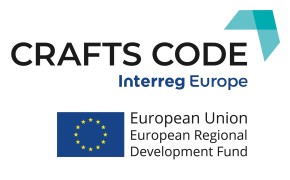In Finland, handicraft is a compulsory subject in comprehensive schools taught in grades 1-9. It is offered in textiles and wood working.
The Basic Education Act (628/1998) defines handicrafts as a subject to be taught in basic education. It is regarded as a basic life skill of the citizen necessary to being an independent and fully functioning citizen. Being taught as a mandatory subject, including both textile and wood handicrafts, handicraft ability is expected to improve the life skills of students.
In addition, it improves other learning, enhancing academic learning, and innovation, creativity and design levels of the students, and also strengthening their fine motor skills.
It is taught in grades 1-9 of the comprehensive school, the years 1-7 being compulsory and the years 8-9 being optional with the possibility to choose between textile or technical handicrafts or not to choose handicraft at all.
The practice is applied in all of Finland, including Ostrobothnia.
a. Compulsory for all in the basic curriculum (years 1-7)
• Grades 1-2: getting to know, testing and trialling, creating the basis.
• Grades 3-6: practising and deepening the skills
• Grades 7-9: move towards innovation by applying previous learning. In all, innovation, safety at work, responsibility, usability and documentation are taken into consideration.
b. Optional study (years 8-9)
In the 8th and 9th grades, students choose optional studies which include different subjects from languages to handicraft. Handicraft is further divide into textile and technical handicraft between which students may choose.
Resources needed
Human resources
- Educational planners at the federal, regional, local and organisational levels
- Monitoring by the ministry
- Teachers with professional expertise and knowledge about handicrafts
- Students
- Parents
Financial resources for training, materials and equipment required.
Evidence of success
- Ongoing and still in the national curriculum
- Students acquire basic life skills and become more independent
- Psychological benefits, such as the feeling of success and achievement; may be especially profound for students who struggle in other areas
- Could inspire future professional opportunities in craft-making
- Cognitive benefits; utilising new/under-used parts of the brain
- Maintaining culture and tradition
- Improved fine motor skills
- Increased innovation levels.
Difficulties encountered
Continuing discussions about the balance between school subjects and which are most important, and also limitations of material and financial resources for education threaten handicraft programs. Even so, schools provide materials, making access equal to all students.
Potential for learning or transfer
- Handicrafts are basic life skills and increase the independence of citizens who acquire abilities to, for some examples, sew on a button or a zipper, mend their own trousers, fix a chair, etc. These skills are needed in every culture and country.
- The basic structure of this practice, with its flexibility, is, in theory, transferable to any country. There will be differences in national politics and interests in what is taught at school and what is not taught. Countries can also arrange courses in different combinations or otherwise modify formats to fit national and local needs and ways.
Tags: Culture, Education








